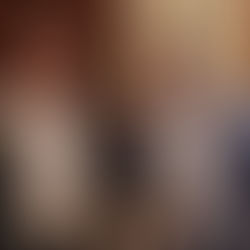
Blepharitis is a common eye condition that causes the eyelids to become sore and inflammed.
What's Happening?
The eyelids are inflamed and so can appear red, swollen and dry. Usually this does not cause any serious damage to the eyes, but it can be very uncomfortable and if left untreated can lead to secondary complications. In uncommon severe cases there is a risk of causing long term damage. It is a chronic condition which means it is around for a long period and ongoing treatment is required.
Different Types
1. Anterior blepharitis - the front part of the eyelids become sore, caused by infection, allergy or sensitivity to bacteria on the eyelids. It can also be associated with some scalp conditions, such as a very dry or oily skin and dandruff.
2. Posterior blepharitis - the glands that make the oily layer of your tear film become blocked (meibomian gland dysfunction, MGD).
Both types of blepharitis can cause dry eye or make it worse if already present. Many people have a combination of blepharitis, meibomian gland dysfunction and dry eye.
Who can get it?
Blepharitis is more common in people over the age of 50, but anyone can develop it. This is often because the glands that make the normal tears, particularly the oily part of the tears, tend to become less effective as you get older.
What will I experience?
Blepharitis can cause crusting and white scales may stick to the roots of eyelashes. Your eyelid edges may become red and your eyes may feel gritty, burning, stinging, sore or itchy. If you experience these symptoms, please make an appointment to come and see us.
What can I do about it?
First line therapy is with lid hygiene (detailed below) twice daily and routine ocular hygiene appointments which we advise 6 monthly. Lid hygiene should be carried out and monitored over the course of at least 6 months or more.
Should lid hygiene and regular ocular hygiene appointments alone not improve the condition we can then start to look at treating the condition with a course of oral antibiotics which we can prescribe and treat you for in practice (provided they are suitable for you).
So, what is lid hygiene?
1. Wash your hands before and after cleaning your eyelids.
2. Pre-soak a cotton bud in Ocusoft Plus (Should your dexterity allow this, otherwise a cotton pad will suffice)
2. Using a heat mask, as per the guidance on the instructions, place over the eyes for a minimum of 10 mins.
3. Once you remove the mask, take the pre-soaked cotton bud and, looking in a mirror, gently rub the tip back and forth all the way along the lashes and the edge of the eyelid, just behind the lashes, taking care to wipe between the lashes. (DO NOT rub the inside of the lid).
4. Carry out step 3 for the upper and lower lid of both eyes, using a new tip for each lid.
5. Allow any remaining solution to dry on your lids.
6. (OPTIONAL) if your eye lids feel sore after carrying this out, feel free to place a cold compress on your eyes. We have to remember the lids are inflamed and can in some instances be more sensitive.
As always, please come into practice to have any condition professionally diagnosed. However, in this case, there is no harm in everyone performing lid hygiene.
If you have any questions or queries please don't hesitate to get in touch with me. We will go through all of this and more in any ocular hygiene appointment. If you feel you may have something more concerning, please, do not forget, we have a 6-days-a-week, NHS acute eye problem service called APCOS.








